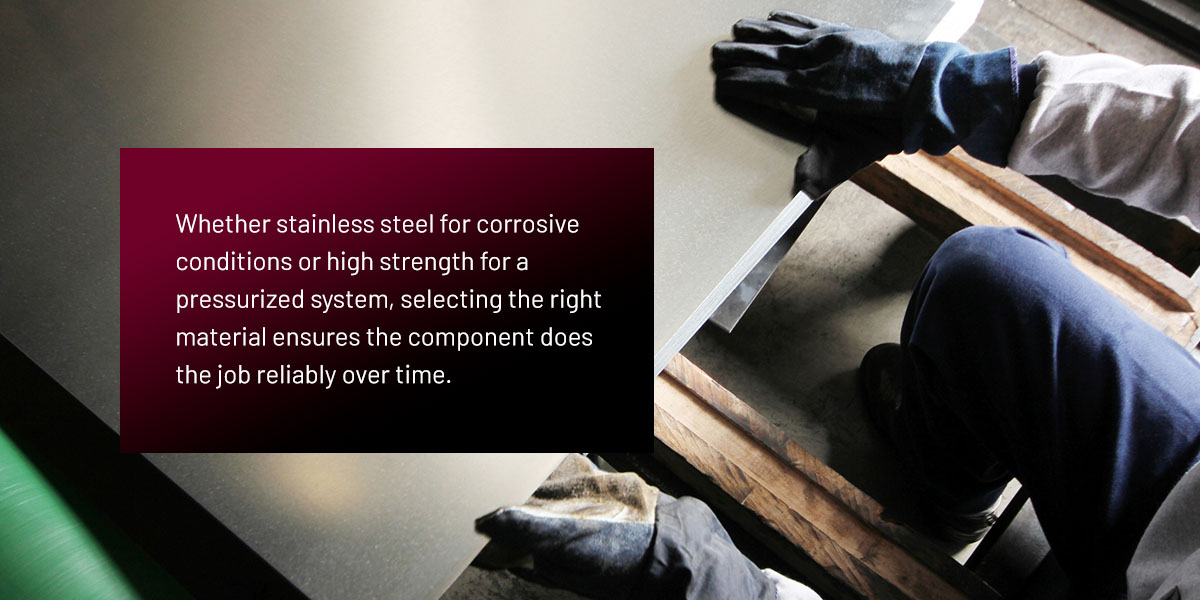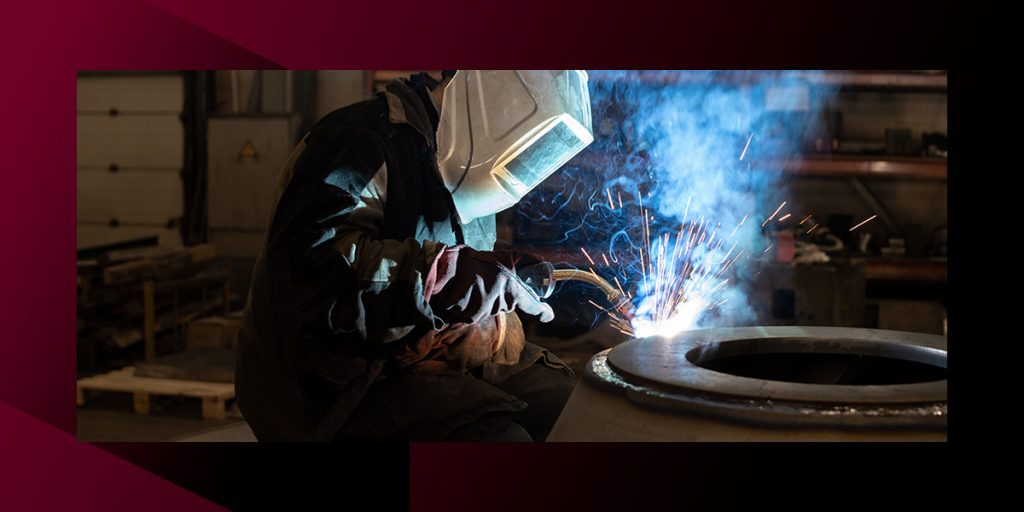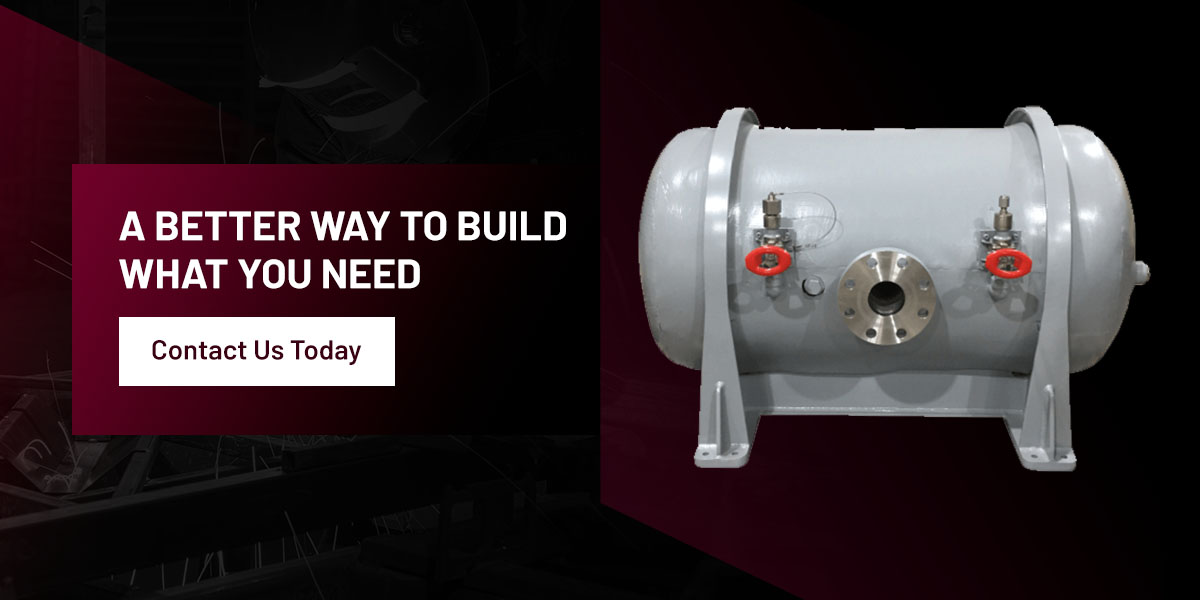Every metal component starts with a need — strength, precision, resistance or fit. However, not every project requires the same process or material. Learn the key benefits of custom metal fabrication and how it can improve performance, durability and long-term value across critical industries.
What Is Custom Metal Fabrication?
Custom metal fabrication is the process of designing and building metal components based on the needs of a specific application. Instead of relying on standard, premade components, engineers and manufacturers have the flexibility to define each part’s shape, material and performance characteristics.
Project requirements can vary widely depending on the industry. That’s why custom fabrication isn’t a one-size-fits-all solution. It’s a tailored process that combines the proper techniques, such as cutting or forming, to meet exact specifications.
Industries That Benefit From Custom Metal Fabrication
Reliability and performance are necessary in industries that drive success. A few key sectors rely on custom fabrication:
- Automotive: From prototype parts to structural reinforcements, engineers can specify exact tolerances, materials and finishes.
- Aerospace: Custom-fabricated parts can help improve aerodynamics and withstand heat and high-altitude stress.
- Military and defense: Strict standards and sensitive applications make custom fabrications perfect for demanding defense requirements.
- Energy and power generation: Power systems operate under constant stress and environmental exposure. In oil, gas and power generation, custom metal fabrication helps create durable housings, piping systems and heat exchangers that can handle heat, pressure and corrosive environments over long cycles.
- Construction: No two jobsites are the same, and neither are the components required. From custom steel framing to platforms and equipment enclosures, construction firms rely on fabricators to deliver components that fit unique architectural and engineering requirements.
- Food and beverage processing: Custom stainless steel fabrication enables clean-in-place systems, smooth finishes and seamless integration with existing process lines.
- Medical: Custom fabrication is essential for medical equipment and surgical instruments where precise tolerances, sterility and strict regulatory compliance are paramount.
Why Choose Custom Fabrication?
When standard parts can’t meet the demands of your project, custom fabrication offers a more reliable solution. The main benefits of custom metal fabrication are:
Precision and Flexibility
Instead of modifying your design to fit a stock part, you have complete control over dimensions, tolerances, materials and finish. This level of flexibility means you can work with engineers to refine each component’s look, performance and function.
Enhanced Product Compatibility
Custom fabrication makes it easier to design parts that fit seamlessly into your existing systems. No adjustments or compromises are needed. Whether you’re replacing a legacy component or building around specialized equipment, each part is engineered to match the exact connection points and performance requirements of your application.
Improved Durability and Material Selection
With custom fabrication, you’re not limited to a default metal. You can select materials based on your project needs. Every material decision is made with your operating conditions in mind, resulting in stronger, more resilient components.
Streamlined Production and Efficiency
Custom metal fabrication allows you to choose the most efficient path from start to finish. Fabricators can select the ideal manufacturing method by evaluating the parts’ function, geometry and material requirements. This ensures the job is done right the first time with fewer revisions and less wasted effort.
Since each part is built to suit your exact system, you avoid delays caused by misalignment, part overlap or excess wear. When everything fits and functions as intended, production moves faster and installation goes more smoothly.
Cost-Effectiveness in the Long Run
Because each part is designed to integrate cleanly into your system, installation is quicker and less prone to delays. There’s no need for field adjustment, which means a smoother workflow overall. Over time, this efficiency can translate into meaningful cost savings, especially on projects where reliability and uptime are nonnegotiable.
Innovation and Design Freedom
Custom fabrication allows engineers and designers to think beyond standard shapes and limitations. Whether developing a new product or reengineering an old one, you’re not boxed into preset dimensions or materials. Instead, you can experiment and refine as you need.
The Custom Metal Fabrication Process
A successful fabrication project doesn’t just depend on the final product. It depends on a transparent, collaborative process from start to finish. Each phase is critical in meeting your technical, operational and compliance requirements.
1. Consultation and Needs Assessment
During this initial stage, the fabrication team works closely with you to gather key details such as application requirements, performance expectations, design constraints and regulatory or environmental factors. This early alignment helps reduce surprises later on and ensures that the fabrication approach supports your product goals.
2. Design and Engineering
Engineers develop detailed computer-aided design (CAD) drawings and may use simulations to evaluate the part’s performance under pressure, temperature or load. Sometimes, this phase includes prototyping, allowing for real-world testing before full-scale production.
3. Material Selection

The fabrication team recommends metals with the best strength, corrosion resistance and cost combination based on the application’s environment and operating conditions. Whether stainless steel for corrosive conditions or high strength for a pressurized system, selecting the right material ensures the component does the job reliably over time.
4. Fabrication
This phase includes precision cutting, rolling, forming, welding and finishing, each executed to exact specifications. For multipart builds, assembly also takes place at this stage. In addition, strict adherence to the original design is essential to ensure the part performs as intended when installed.
5. Quality Control and Testing
Before any part leaves the shop floor, it undergoes a series of inspections and tests. These can include dimensional checks, weld inspections, hydrostatic testing and compliance verification based on applicable codes or standards.
6. Delivery and Installation
Once testing is complete, the components are carefully packed and shipped to your facility. Support may extend to installation coordination or vendor collaboration for larger systems or multipart assemblies.
How to Choose the Right Custom Metal Fabrication Partner
Selecting the right partner can make the difference between smooth project delivery and costly setbacks.
Evaluate Your Potential Partner
Before committing to a fabricator, assess whether their capabilities, processes and communication style align with your project needs. These considerations can help you determine whether the partnership will support both technical and operational success:
- The fabricator should have proven experience with projects similar in size, complexity and industry.
- Certifications relevant to your sector must be in place and actively maintained.
- Engineering support should be available throughout the design phase.
- Quality control procedures must be thorough and well-documented, with inspection protocols that match your expectations.
- Production schedules, lead times and project timelines should be communicated transparently from the start.
Ensure Certifications and Compliance
Certifications reflect the company’s adherence to recognized standards and ensure your fabricated components meet industry requirements. Depending on your application, look for credentials such as:
- ISO 9001:2015: A widely recognized quality management standard
- ASME certification: Required for pressure vessels and systems operating under specific codes
Review Portfolio and Client Testimonials
A solid track record speaks volumes. Ask to see examples of past work, especially projects that resemble yours in complexity or application. Review case studies or speak with references.
Verify Experience and Facility Capabilities
A well-equipped facility and experienced project managers make a big difference. Ask about fabrication capacity, materials handled and how they manage complex builds. A fabricator with the right experience and facility setup will be better positioned to deliver a high-quality result — on time and within budget.
A Better Way to Build What You Need
When your project depends on accuracy, reliability and long-term value, settling for a standard component can create more problems than it solves. Custom metal fabrication allows you to build exactly what your system requires. From choosing the right materials to ensuring compatibility with existing infrastructure, every decision is made with your application in mind.
BEPeterson brings decades of experience in complex fabrication, backed by industry certifications and a commitment to engineering partnerships. Contact us online to get started with your next project.



Hello
Thanks for sharing the great information. I read this blog and must say the information that you shared in this blog is really very useful. Please post more blog related to ” Custom Steel Fabrication Company In Canada”.
Thank You.